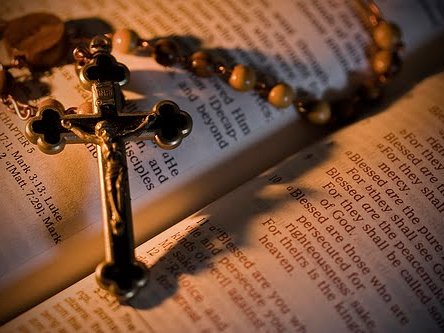In the midst of a heat bubble 64 years ago just like the one squatting on us lately, inmates at a Catholic home for "wayward girls" in Wauwatosa rose up off their callused knees and went over the wall.
Newspaper headlines called it a "riot," but the Mother Superior at the Good Shepherd Home on North 88th Street and West Bluemound Road put it down to "The desire for freedom intensified by the heat." Temperatures in the area had reached the high 90s for three days running in the first week of August, causing businesses to shut down, sending scores to hospitals suffering from heat prostration, and ultimately killing five Milwaukee residents.
Operated by the Milwaukee Archdiocese and the Sisters of the Good Shepherd, the House of the Good Shepherd took in females ages 12-21 who were adjudged behaviorally deficient by a court, or whose parents had thrown up their hands and decided that the character-developing discipline only Catholic nuns could inflict was their last hope.
There were 96 inmates there on Aug. 4, 1947, when the temperature would hit 99 at the airport -- the hottest Milwaukee day in seven years. After Mass and breakfast there was a recreation period on the grounds enclosed on all sides by a 12-foot wall. At its conclusion, as everyone was herded into the main building, two girls broke away and headed for the wall on the Wisconsin Ave. side.
One of them made it over the wall, and the other fell back into the Good Shepherd yard and screamed that they'd never take her alive. Not really; but her blubbering provided cover for several other girls to make a successful run for it.
In the main laundry room where the inmates washed linens for area hotels, other girls overturned washtubs and furniture. Unable to restore order themselves, after three hours of trying the 12-nun staff headed by Sr. Mary of St. Urban called for law enforcement.
Twelve girls escaped. Within a half-hour, six were rounded up on Watertown Plank Road as they tried to hitch a ride on anything steaming west. Two more girls were caught that night, one of them at a relative's house on the South Side where in a misguided effort to make herself inconspicuous she'd just dyed her blonde hair red.
In an interview with county detention personnel, one of the escapees said she couldn't take it at Good Shepherd anymore because she got pimples and gained weight on a diet consisting of too much starch and not enough veggies.
Another girl said the biggest problem was "too much praying – look at the calluses on my knees! I'm for religion, but not that much!"
Sr. Mary dismissed it was mere heat-induced hysteria.
"Anyone is welcome to go through our school and see the kind of food and education we give the girls in our care," she said.
"I believe there is no such thing as a bad child. We do everything we can to make their stay here pleasant and useful. We have a complete four-year high school course, entertainment and movies for the girls."
Four of the escapees were still on the lam when, two days later, 17 more girls escaped and others again locked themselves in the laundry room and trashed it until a summons to "all available squads" brought the blue-coats running.
John J. Kenney, Milwaukee's chief probation officer, defended Good Shepherd as a well-run institution. Food, he said, "is always something that people kick about, even in the best girls' boarding schools."
As for all that kneeling, Kenney said that many inmates had only "loose religious training" and so when "put in an intensely religious atmosphere they resent it."
Eventually about half the escapees were transferred to the State School for Girls in Oregon, Wisconsin, including a 15-year-old who demanded it because even though she had gained some "spiritual benefit" at Good Shepherd, all she learned to do there was "fold sheets."
This will come as a large disappointment to gullible natives of Wauwatosa, like the author, who grew up near Good Shepherd and heard that the inmates received intensive training in the sexual arts.
The House of Good Shepherd went out of business in the mid-1960s, and in 1977 the green outer wall came down and the eight-plus acres became the home of Wisconsin Lutheran College, where the inmates get all the greens they can hold and the screws are for religion, but not that much.



